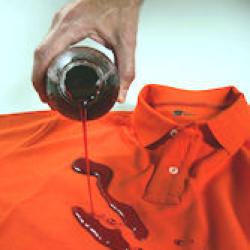Source Institutions
Source Institutions
Add to list Go to activity
Activity link broken? See if it's at the internet archive

This lesson focuses on how nanotechnology has impacted the design and engineering of many everyday items from paint to fabrics. Learners explore the hydrophobic effect and how similar properties can be introduced by reengineering products at the nano level. Learners work in teams to develop a waterproof material and compare their results with nano waterproof materials developed recently by engineers and scientists.
- 5 to 10 minutes
- 1 to 2 hours
- Over $20 per group of students
- Ages 8 - 18
- Activity, Experiment/Lab Activity, Lesson/Lesson Plan
- English
Quick Guide
Materials List (per group of students)
- Resource Sheets
- Worksheets
- Microscope or camera scope (optional)
- Sink or bucket to test fabrics
- Four 4 in x 4 in pieces of plain white cotton fabric
- One 4 in x 4 in piece of fabric that has been adjusted at the nano level
- Waterproofing materials: wax, crayons, flax seed, lanolin, clay, glue or other items suggested by learners
- Spoons or sticks for smoothing
Subjects
-
Engineering and Technology
-
Engineering
- Chemical Engineering
- Manufacturing Engineering
- Metallurgy and Materials Engineering
- Nanotechnology
-
Technology
- Manufacturing
-
Engineering
-
Mathematics
-
Measurement
- Size and Scale
-
Measurement
-
Physical Sciences
- Structure and Properties of Matter
-
The Nature of Science
-
The Scientific Process
- Conducting Investigations
- Gathering Data
- Formulating Explanations
- Communicating Results
-
The Scientific Process
-
The Nature of Technology
-
Technology and Society
- Impacts of Technology
-
The Design Process
- Research and Development
- Invention and Innovation
- Problem Solving
- Troubleshooting and Maintenance
-
Technology and Society
Audience
To use this activity, learners need to:
- see
- read
- touch
Learning styles supported:
- Involves teamwork and communication skills
- Involves hands-on or lab activities
Other
Components that are part of this resource:
Includes alignment to state and/or national standards:
This resource is part of:
Access Rights:
- Free access
By:
Rights:
- All rights reserved, IEEE,
